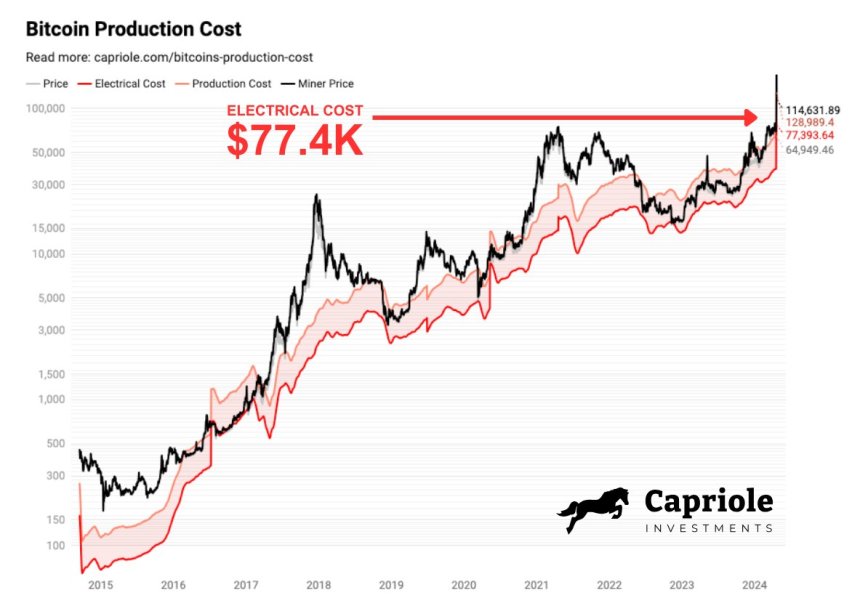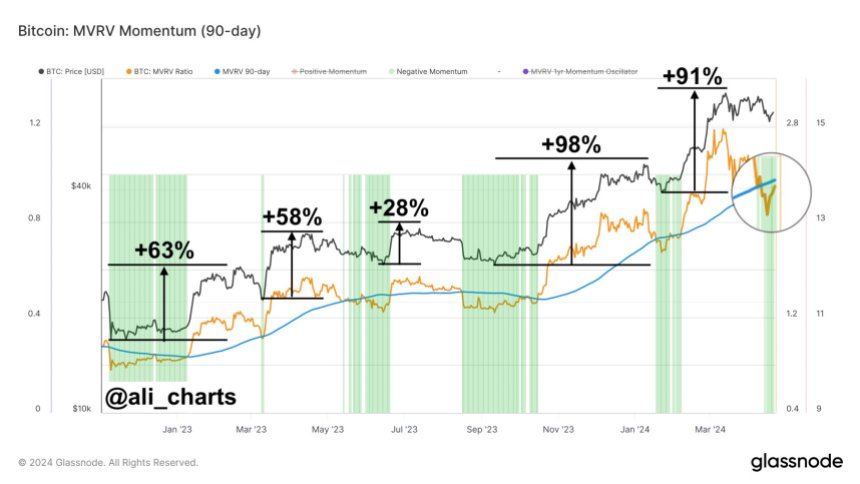The Bitcoin price has experienced heightened volatility over the past week. After recovering from a low of $56,500, the largest cryptocurrency in the market surged to $65,500 within four days. However, it has since retraced some of its gains and is currently testing the $61,000 support level.
Despite this volatility and the absence of strong bullish momentum, venture capital firm Pantera Capital remains optimistic about the future of BTC’s price, citing the recent Halving event as a significant factor.
Pantera Capital Projects $117,000 Price Target By 2025
In a recent investor letter, Pantera Capital revealed its Bitcoin Halving rallies model, which predicts a bottoming out of the BTC price followed by a rise through the Halving rally.
Based on the average duration of previous rallies, the firm forecasts that BTC’s price will peak at $117,000 in August 2025. The average total duration of this cycle, encompassing pre- and post-Halving rallies, has historically been around 2.6 years, with symmetry observed across cycles.
Pantera Capital highlights the relationship between Halving events and BTC’s price. The firm asserts that if the demand for new Bitcoin remains constant while the supply of new Bitcoin is reduced by half, it will create upward pressure on the price.
The anticipation of a price increase has also historically driven increased demand for Bitcoin leading up to Halving events. However, Pantera Capital acknowledges that the impact of each subsequent Halving on price may diminish as the reduction in the supply of new Bitcoin from previous Halvings becomes less significant.
Moreover, the firm notes that, on average, the Pantera Bitcoin Fund has nearly doubled in value for eleven years. Based on this historical performance, Pantera Capital envisions a scenario in which the price of Bitcoin reaches $117,000 by 2025.
Bullish Bitcoin Price Predictions
Renowned crypto analyst Titan of Crypto has recently taken to social media platform X (formerly Twitter) to share bullish predictions for the Bitcoin price. With forecasts ranging from $75,000 to $110,000, Titan of Crypto highlights various factors and patterns that could potentially drive BTC’s growth.
According to Titan of Crypto, a price rise to $110,000 for Bitcoin is “programmed.” While the analyst did not elaborate on the specifics of this programming, it suggests a strong conviction in BTC’s potential to reach that level.
Titan of Crypto also identifies a current head-and-shoulders pattern in the Bitcoin price chart. If this pattern holds, the analyst suggests that BTC could rise to the $75,000 mark. If confirmed, this pattern could signify a bullish trend reversal and further support the projection of Bitcoin reaching higher price levels.
The analyst also highlighted $61,500 as a critical point to monitor due to the possibility of “panic selling.” The analyst suggests many market participants might react to this level, potentially increasing selling pressure.
Lastly, based on his analysis, the analyst suggests a conservative price prediction of $108,000. However, Titan of Crypto believes that BTC’s price may exceed this projection, indicating a more optimistic outlook.
Featured image from Shutterstock, chart from TradingView.com

